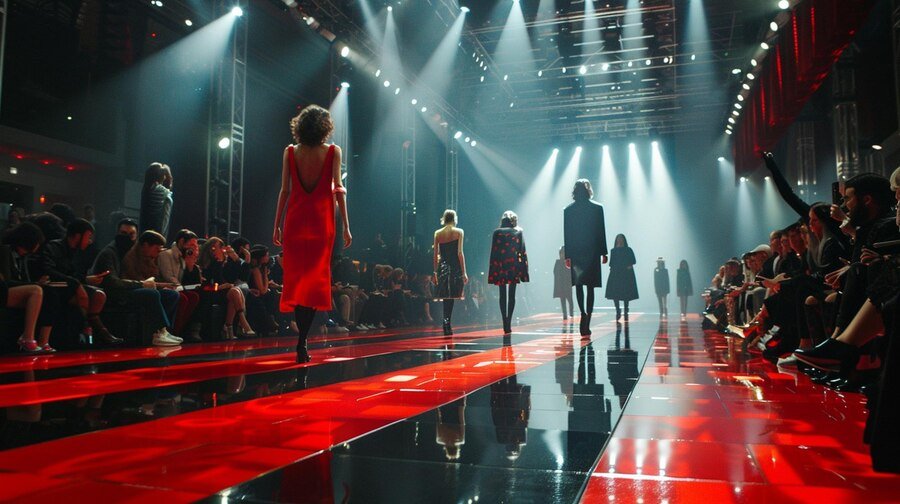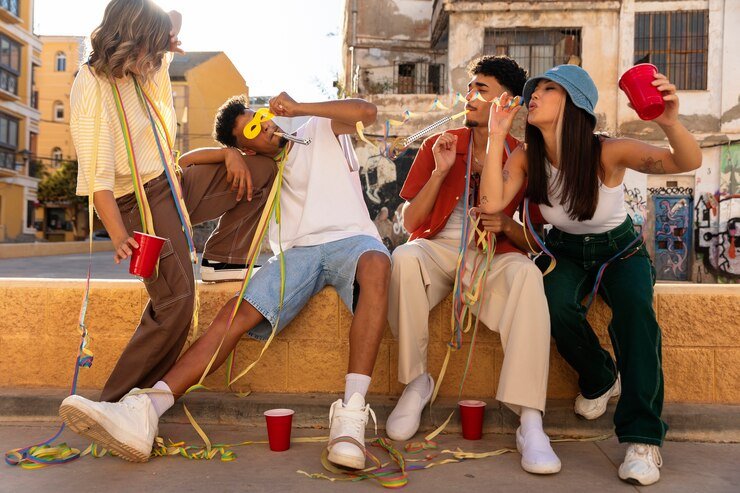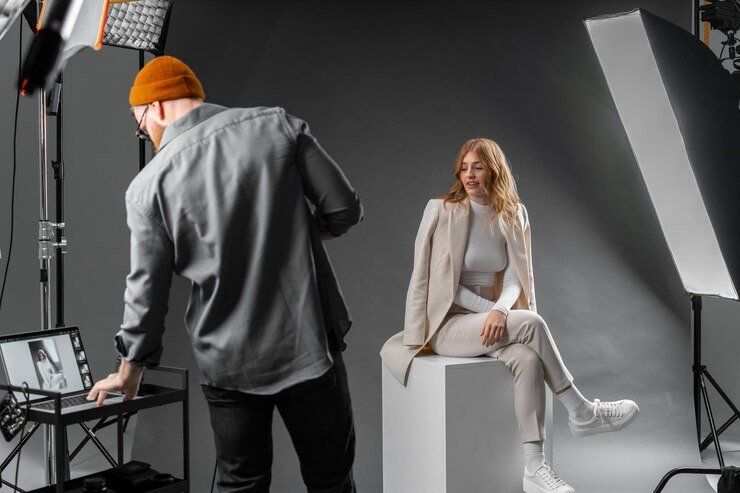
Introduction to Fashion Runway Shows
Fashion runway shows are the pinnacle of style, creativity, and artistry. They serve as a vibrant platform where designers showcase their latest collections, setting trends that will ripple through the fashion industry for seasons to come. But behind every stunning display on the catwalk lies meticulous planning and preparation. Whether you’re an aspiring designer or a seasoned event organizer, understanding how to prepare for a fashion runway show is essential.
From selecting talented models to creating an unforgettable theme, each detail plays a crucial role in bringing your vision to life. This blog post will guide you through every step of the process so you can make your next show not just memorable but truly spectacular. Get ready to dive into the world of fashion runways and discover what it takes to create an extraordinary experience for both participants and attendees alike!
Choosing the Right Designers and Models
Selecting the right designers and models is crucial for a successful fashion runway. Designers should reflect the show’s vision, offering pieces that tell a cohesive story. Look for creativity and originality in their collections.
When it comes to models, consider diversity and versatility. A varied lineup showcases different styles effectively and appeals to a broader audience. Take time to review portfolios, focusing on how each model embodies the spirit of your theme.
Fit is important too; ensure models can wear the garments comfortably while walking confidently down the runway. Communication with both designers and models helps foster collaboration, ensuring everyone feels valued.
Trust your instincts when choosing talent. Their energy will set the tone for your event—pick those who resonate with your mission.
Scheduling and Logistics for a Successful Show
Scheduling is crucial for a successful fashion runway. Start by setting a clear timeline. This includes every phase from planning to the final bow.
Create detailed schedules that outline when each segment occurs. Factor in model fittings, rehearsals, and time for hair and makeup. Coordination among teams ensures everyone knows their roles.
Logistics can make or break your event. Confirm all vendors well ahead of time—caterers, audio-visual teams, and security personnel should be on board early.
The venue layout is another critical element. Plan the seating arrangement carefully to maximize visibility while ensuring easy access for models and staff.
Don’t forget about transportation logistics too! Arrange reliable transport for equipment and team members to avoid any last-minute chaos on show day. Always have contingency plans ready; flexibility can help address unforeseen challenges seamlessly.
Creating a Theme and Vision for the Show
A captivating theme can elevate your fashion runway show from ordinary to extraordinary. It’s the driving force behind every decision, creating a cohesive aesthetic that resonates with the audience.
Start by brainstorming ideas that reflect current trends or timeless concepts. Consider cultural influences, seasonal inspirations, or even personal narratives. The goal is to craft a vision that tells a story through design.
Once you have your theme, communicate it clearly to designers and models. This ensures everyone is aligned and understands their role in bringing this vision to life.
Incorporate visual elements like color palettes and textures into your preparations. Every detail matters—from the fabrics used in garments to accessories—creating an immersive experience for attendees.
Remember, consistency will make your show memorable. A well-executed theme not only captivates but also leaves a lasting impression long after the lights dim and the applause fades away.
Hair, Makeup, and Styling Tips for Models
Hair and makeup are crucial elements of a successful fashion runway. They not only enhance the designer’s vision but also elevate the models to embody that vision.
Start with hair. Choose styles that complement each outfit while keeping practicality in mind. Simple, sleek looks often work best, allowing attention to remain on the clothes.
When it comes to makeup, consider the theme of the show. Bold colors can create drama for evening wear, while soft tones may suit daywear collections. Always ensure that the makeup is long-lasting; models will be under bright lights and possibly sweating.
Styling should focus on balance too. Accessories should enhance but never overshadow a garment. Encourage models to exude confidence; their attitude will bring every look alive on stage.
Don’t forget about skin prep! Hydrated skin makes any makeup application flawless and radiant, ensuring that your models shine throughout the show.
Music, Lighting, and Set Design
The ambiance of a fashion runway show hinges on its music, lighting, and set design. Each element works in harmony to create an unforgettable experience for the audience.
Choosing the right soundtrack sets the mood. Upbeat tracks can energize the crowd, while softer melodies may evoke emotion. Think about how each piece complements your collection’s theme.
Lighting transforms the space dramatically. Spotlights draw attention to models as they walk down the runway, while colored lights can enhance specific designs or themes. Experiment with different effects to elevate key moments during the show.
Set design is equally crucial. A well-thought-out backdrop enhances your garments without overpowering them. Minimalist designs often work best but don’t shy away from bold statements if they align with your vision.
Together, these elements weave a narrative that captivates everyone present and brings your fashion runway to life in vivid detail.
Dealing with Last Minute Changes or Mishaps
Fashion runway shows are dynamic events. Unexpected changes can happen at any moment. Models can fall sick, or a designer’s outfit might not arrive on time. Being prepared for these surprises is key.
Stay calm and adaptable. A flexible mindset helps you think clearly under pressure. Always have backup plans in place to address potential issues quickly.
Communicate with your team regularly as the show approaches. Keeping everyone informed fosters collaboration and strengthens problem-solving abilities when challenges arise.
Empower your team members to make decisions on the spot if necessary. This decentralizes authority and speeds up response times.
Remember, sometimes a mishap can turn into an opportunity for creativity. Embrace spontaneous moments; they often lead to memorable experiences that set your show apart from others in the fashion industry.
Promoting and Marketing Your Fashion Show
Promoting a fashion runway show is all about creating buzz. Start by leveraging social media platforms, showcasing sneak peeks of designs and behind-the-scenes moments. Engaging posts can spark excitement leading up to the event.
Collaborate with influencers who resonate with your aesthetic. Their endorsement can broaden your reach and attract a diverse audience. Consider partnerships with local businesses for cross-promotion opportunities that benefit everyone involved.
Don’t forget traditional methods; flyers or posters in trendy areas can still capture attention. Email marketing also plays a crucial role—send personalized invites to VIPs and loyal followers, enticing them with exclusive access or offers.
Utilize press releases to connect with fashion magazines or blogs, ensuring your show gets featured in relevant outlets. A well-executed PR strategy amplifies visibility and enhances credibility within the industry, making it an essential part of any successful campaign for a fashion runway event.
Setting a Budget and Selecting a Venue
Setting a budget for your fashion runway show is crucial. It guides every decision, from designer fees to venue selection. Start by determining how much you can realistically spend.
Consider all potential costs: models, hair and makeup, lighting, sound systems, and marketing materials. Don’t forget unexpected expenses; it’s wise to set aside a contingency fund.
When selecting a venue, think about the atmosphere you want to create. A trendy loft might suit avant-garde designs while an elegant ballroom could complement high-end couture collections.
Accessibility is another key factor. Ensure that the location is easy for guests and participants to reach. Check parking options or public transport links as well.
Also consider the layout of your chosen space—will it accommodate seating arrangements and provide enough room for the runway?
Each element should align with your vision while staying within budget constraints.
Rehearsals and Dress Rehearsals
Rehearsals are the backbone of a successful fashion runway. They provide an opportunity to fine-tune every aspect of the show. Models get accustomed to their routines, walking styles, and outfit changes.
During dress rehearsals, everything comes together. It’s not just about practicing walks; it’s about syncing with music and lighting. Each model should feel confident in their attire while navigating the catwalk.
Coordination is key here. Choreographers work closely with models, ensuring they understand cues and timing. This preparation helps avoid chaos on show day.
Feedback during these sessions is invaluable. Designers can make last-minute adjustments based on how garments look in motion under lights.
Capturing this rehearsal on video allows for crucial review later—something you won’t want to miss when it comes time for your big night!
Importance of Professional Photography and Videography
Capturing the essence of a fashion runway show goes beyond just memories. Professional photography and videography are essential for showcasing the artistry involved in each collection.
High-quality visuals convey the intricate details that might otherwise go unnoticed. The fabric’s texture, color vibrancy, and designers’ craftsmanship deserve to be highlighted through expert lenses.
Videography adds another layer by documenting movement and energy. It allows viewers to experience the atmosphere as if they were part of it—feeling the excitement during each model’s stride down the catwalk.
These professional assets serve multiple purposes too. They can be used for marketing future events, attracting sponsors, or promoting designers on various platforms.
Investing in skilled professionals ensures your fashion runway is immortalized beautifully, creating lasting impressions long after the final walk has ended.
Post-Show Reflections: What Went Well and What Can Be Improved
Post-show reflections are crucial for growth. Take a moment to gather feedback from the team, designers, and models. Each perspective offers invaluable insights.
Identify what aspects of the fashion runway were successful. Perhaps the theme resonated well with the audience or the model transitions were seamless. Recognizing these strengths can help replicate success in future events.
Conversely, pinpoint areas needing improvement. Was timing an issue? Did any technical glitches disrupt the show? Honest discussions about challenges pave the way for better planning next time.
Encourage open dialogue among all participants. A collaborative approach allows everyone to contribute ideas and solutions.
Document everything thoroughly; this will serve as a reference for upcoming shows. Continuous evaluation fosters evolution in your work and enhances your reputation within the industry.
Conclusion
Preparing for a fashion runway show is an intricate process that requires attention to detail. From selecting the right designers and models to coordinating every aspect of the event, each decision plays a crucial role in ensuring success.
Crafting a unique theme will help create a cohesive experience that resonates with your audience. The choice of music, lighting, and set design further amplifies this vision. Don’t overlook the importance of hair and makeup; they bring your models to life and enhance the overall aesthetic.
Keep in mind that last-minute changes are part of the game. Flexibility can turn potential setbacks into opportunities for creativity. Promoting your show effectively will draw more eyes—both online and offline—to what you have worked so hard to produce.
Budget management is essential as well, helping you secure an ideal venue without going overboard financially. Rehearsals are where it all comes together; they allow everyone involved to polish their roles before hitting the runway.
Documenting your event through professional photography and videography captures not only memories but also offers material for future promotions or portfolio pieces. Afterward, reflecting on what went well—and areas needing improvement—will inform your next steps for upcoming shows.
The world of fashion runways presents both challenges and exhilarating experiences. Embrace every moment as you prepare to showcase creativity at its finest.
RELATED POSTS
View all


